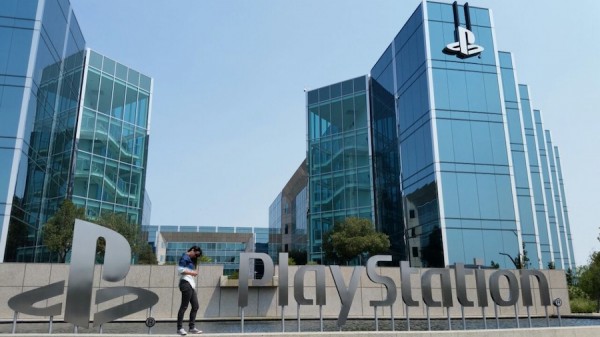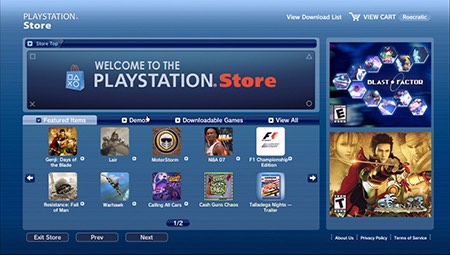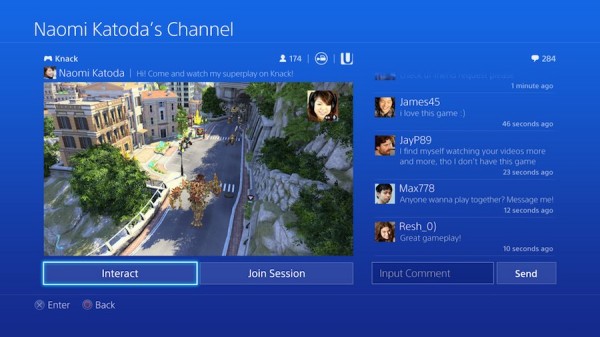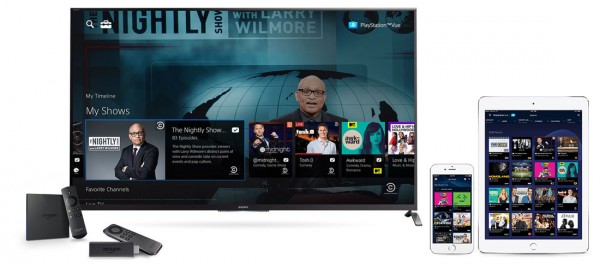
As you might have heard by now, Sony Computer Entertainment and Sony Network Entertainment are being fused together under a new company called Sony Interactive Entertainment LLC. This is important because until now, Sony Computer Entertainment (SCE) has been in control of all PlayStation-related hardware and software (games) while Sony Network Entertainment (SNE) has lead services like PlayStation Vue and PlayStation Store. Now under SIE, Sony will be combining the two divisions and bringing them under one headquarters in San Mateo, California.
Under the new company, there will be some leadership changes as well with Andrew House leading things as CEO and President. According to House:
“By integrating the strengths of PlayStation’s hardware, software, content and network operations, SIE will become an even stronger entity, with a clear objective to further accelerate the growth of the PlayStation® business. Along with our business partners, SIE will develop pioneering services and products that will continue to inspire consumers’ imaginations and lead the market. We will work hard to maximize corporate value by coordinating global business operations across San Mateo, Tokyo, and London by leveraging local expertise.”
While there will be offices in Tokyo and London, the majority of R&D, as well as decision making, will be done out of California. The two remote offices will lead localization efforts which are ever so important, for instance, in Europe, a region that consists of several different countries, languages, and policies. But that aside, the real story here is that after two decades, PlayStation is leaving its country of birth and coming to North America. Nostalgia aside, this is actually a good thing for Sony, the future of PlayStation, and gamers. A lot more after the jump.
10-15 years ago, you’d be insane if you thought of gaming and didn’t first mention Japan. After all, the country is home to PlayStation, Nintendo, and Sega to name a few. Chances are that if you played a title worth a damn in the 80’s, 90’s, and 2000’s, it was likely developed in Japan and eventually released in the US. Think Resident Evil, Metal Gear, Tekken, Gran Turismo, Silent Hill, Dragon Quest, Street Fighter, and of course Final Fantasy. All these titles defined PlayStation and PlayStation 2 and if you owned either console, you likely had a few of them in your collection.
But eventually, the world would change. Enter PlayStation 3, a console with unrivaled power. Much like the PSone and PS2, the PS3 was all about raw power with its unique Cell Processor and improved upon its predecessors by adding new video ports (HDMI), built-in wireless, Blu-ray, etc. Much like Sony Electronics, PlayStation was built on a culture of hardware first. That is, after all, what has always defined Japanese electronics: fantastic hardware.
However, by the time the PS3 arrived, the world was beginning to shift towards being software-centric. Every single title developed internally and exclusively for PS3 was outshining games found on Xbox 360, yet 3rd party developers could never match the same quality, citing difficulty developing for the platform. Not to mention that, in a connected world where gamers wanted to play online with each other and socialize, the Xbox 360 led the pack with a host of features which were incubated on the original Xbox and refined on its predecessor. For Sony, this was really their first stab at this online game space and they stumbled hard.

The first iteration of PlayStation Store was nothing more than an HTML web page.
The PS3 would eventually offer many user-requested features, but they were never quite baked, and it became obvious that they were designed after the console’s vision had been fully realized internally. In the same way the PS3 was caught off guard by this shift towards software/services, so were Japanese developers. Unlike my PSone and PS2 library which consist of 90% Japanese developed games, my PS3 games are most comprised of titles developed in the West like Uncharted, inFamous, KillZone, LittleBigPlanet, MotorStorm, God of War, and The Last of Us and that’s just my personal library. Let’s not forget about the ultra popular shooters like Call of Duty and Battlefield.
Fast forward to the present – a little over two years after PS4’s release – and Sony is enjoying a considerable lead with a console that’s robust and easy to develop for. How was Sony able to turn things around so dramatically for PlayStation? By bringing most of its development to the West and tapping into its internal studios like Naughty Dog, Sucker Punch, and Guerrilla Games when it came to the console’s development.

PS4 Livestream and Game Sharing
Since launch, the PS4 has enjoyed a robust PlayStation Store and online experience with party chats, live streaming (seen above), and other social integrations like the ability to upload screenshots and videos directly to Twitter and Facebook. All these ideas and more have been conceived in North America, including Sony’s growing services which include PlayStation Vue, their solution for cord cutters, and PlayStation Now, which allows you to stream PS3 titles on your PS3, PS4, PS TV, and countless Sony Blu-ray players and TVs.
 Ever wonder what happened to PlayStation TV? A capable device with the right hardware met its doom when it lacked the proper software and services needed – and it’s no surprise. After all, PlayStation TV was formerly the PS Vita TV in Japan, taking the software/hardware found on the PS Vita and shoving them in a box that was designed to be connected to your TV.
Ever wonder what happened to PlayStation TV? A capable device with the right hardware met its doom when it lacked the proper software and services needed – and it’s no surprise. After all, PlayStation TV was formerly the PS Vita TV in Japan, taking the software/hardware found on the PS Vita and shoving them in a box that was designed to be connected to your TV.
This again brings us to PS4 and how it owes a majority of its momentum to good software, thanks to its development in the US. Timothy J. Seppala from Engadget writes
“Okay, so in layman’s terms, don’t really expect much to change in terms of how PlayStation and its connected services work; this appears to be essentially a shuffling of papers. The company will be headquartered in San Mateo, California; it has $2 million in working capital and will count April 1st this year as its first day of business — no foolin’.”
but I don’t think he could be more wrong. This isn’t just about shuffling papers around, but instead it is a major cultural shift that’s on its way to PlayStation, now that’s officially being led by a team from the US and not Japan. Sure; we shouldn’t expect to see something different tomorrow, nor this year, but 2017 and the next PlayStation console? Absolutely.
Many, including myself, have argued that the future of PlayStation isn’t in hardware and instead in services. Sony might be able to pump out 100 million or even 200 million PS4 units but they likely will never peak beyond that because that’s the limitation of selling hardware. Now imagine for a minute if PS4 was treated like software/services and could be on numerous devices that weren’t made by Sony. Suddenly, that ceiling is far higher, right?
To truly understand the potential of PlayStation, it’s best to look at a rival of theirs –no – not Xbox, but Netflix. Sure Microsoft might be a direct competitor to PlayStation but in the end, all entertainment options, from the cinema, to playing console games or watching a live stream are vying for a limited resource, our free time. Now what if Netflix was limited to the hardware they sold? Chances are, not everybody would want another box in their house but Netflix isn’t limited that way. Instead, you can find it on just about every devices which helps makes their service that much more ubiquitous when it comes to choosing something to do with our free time. Turn on a device, click the Netflix app and you’re in.
 In direct contrast to that, if I want to play a PlayStation game, I have to be at a TV with that console connected to it. Now imagine a future where PlayStation Now includes PS4 and starts shipping on non-Sony TVs like Samsung, and is even offered on Apple TV, iOS, and all of Android. Now you suddenly have true scale for PlayStation. Consider this for a minute: some of the top leading platforms of the past decade (iOS, Android, Facebook, Netflix, etc.) have all been developed in the US but are now enjoyed worldwide and universally adopted – oh, and they’re all software-based.
In direct contrast to that, if I want to play a PlayStation game, I have to be at a TV with that console connected to it. Now imagine a future where PlayStation Now includes PS4 and starts shipping on non-Sony TVs like Samsung, and is even offered on Apple TV, iOS, and all of Android. Now you suddenly have true scale for PlayStation. Consider this for a minute: some of the top leading platforms of the past decade (iOS, Android, Facebook, Netflix, etc.) have all been developed in the US but are now enjoyed worldwide and universally adopted – oh, and they’re all software-based.
Even if what I described is a vision that’s for the future, the immediate impact of a software-driven PlayStation will likely be seen far sooner. Chances are that if you have any qualms with PS4, it’s software/services related, meaning that an improvement is a mere firmware update away. Don’t take this as my saying that things will magically become better for PS4 owners or that all the user-requested features will suddenly be fulfilled in the next year. Instead it’s the realization that we’ve reached a point where the hardware across all devices is fairly solid and that the features we want/need are not limited by the console’s internal components, but by the software that runs them. With this software-driven mentality, Sony was able to beat Microsoft with features like live streaming to Twitch and sharing your gameplay to social media. And it’s software that allows PS4 users to view what their friends are playing and easily jump into that game and if need, control their friend’s game to give a lending hand.
Another prime example to consider is VR, which is once again being led by mostly American companies. That’s because, hardware aside (which is quite important in the early years of VR), the key to the platform is software. In order for VR to be compelling, it needs to go beyond a 5-minute demo or 20-minute game session. We will eventually reach a point where the hardware from all manufacturers will be good enough and what will truly differentiate Oculus Rift from PlayStation VR will be the software that drives it. Earlier today, Apple CEO Tim Cook during their Q1 2016 earnings report said:
VR isn’t a niche, can be really cool and has some interesting applications

When Apple talks new products, they rarely, if ever, mention specs – because that number by itself is meaningless. Instead, it’s what the software and applications can do on top of the specs. For example, the specs of the PS4 are completely meaningless in the case of PlayStation Vue, one of the most important services to come out of Sony that isn’t talked nearly enough about. But because PlayStation Vue was developed as a compelling software/service, Sony is also able to easily move it around, hence its availability on iOS (iPhone, iPad) and Fire TV.
Make no mistake about it – the future is all about software and services. With Sony bringing PlayStation to the US, they’re sending a very loud and clear signal that they no longer believe the innovations that have come out of the hardware-driven culture of Japan can sustain their console ambitions and that the future of PlayStation will be created in San Mateo.
Discuss:
Do you think the future of PlayStation is in the US?

You must be logged in to post a comment.